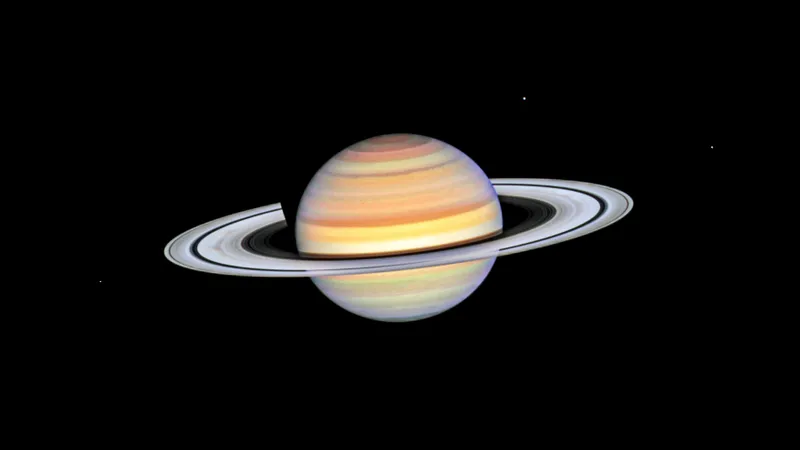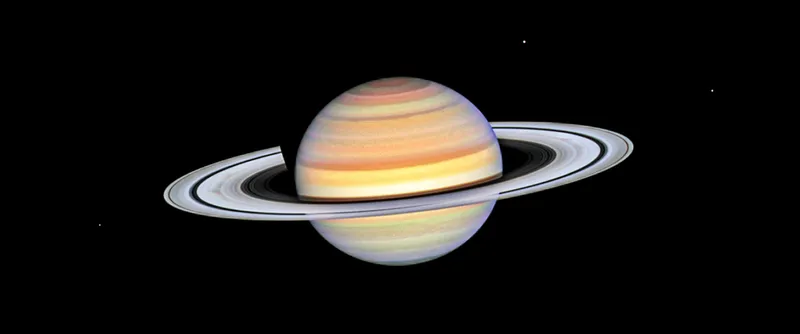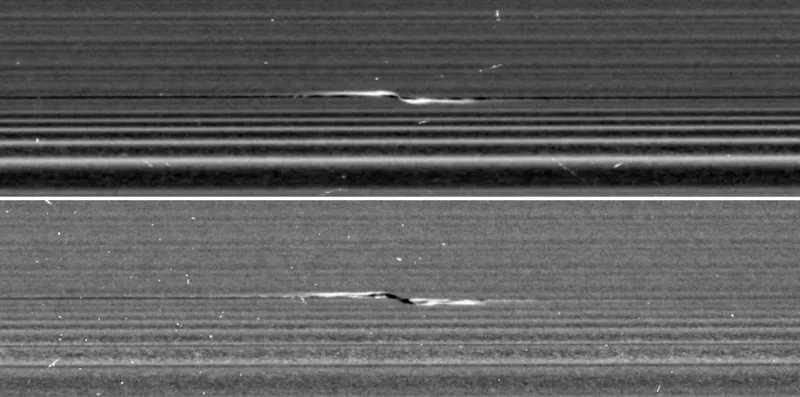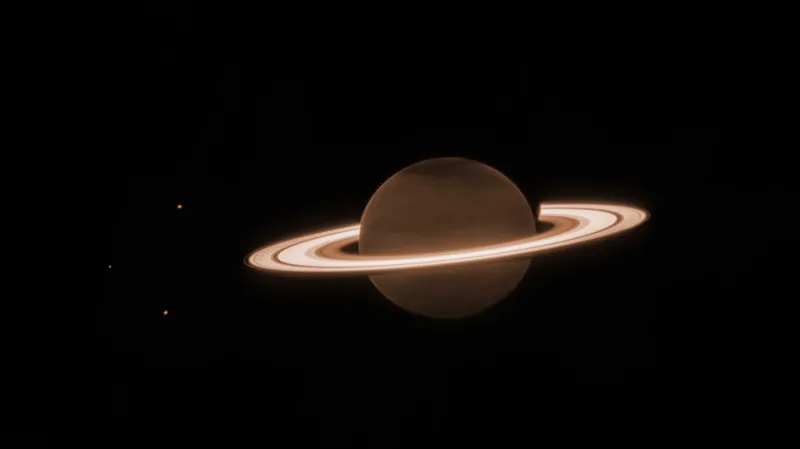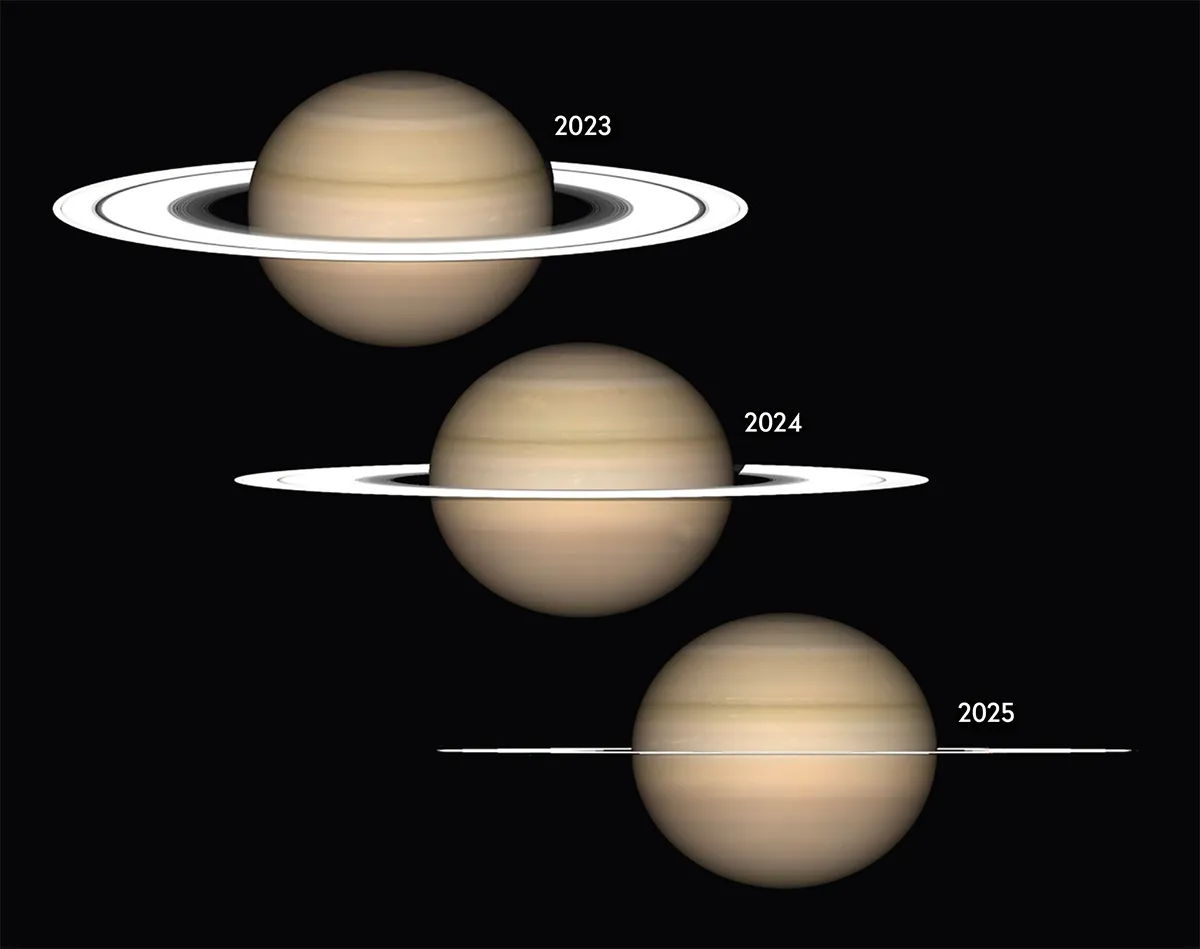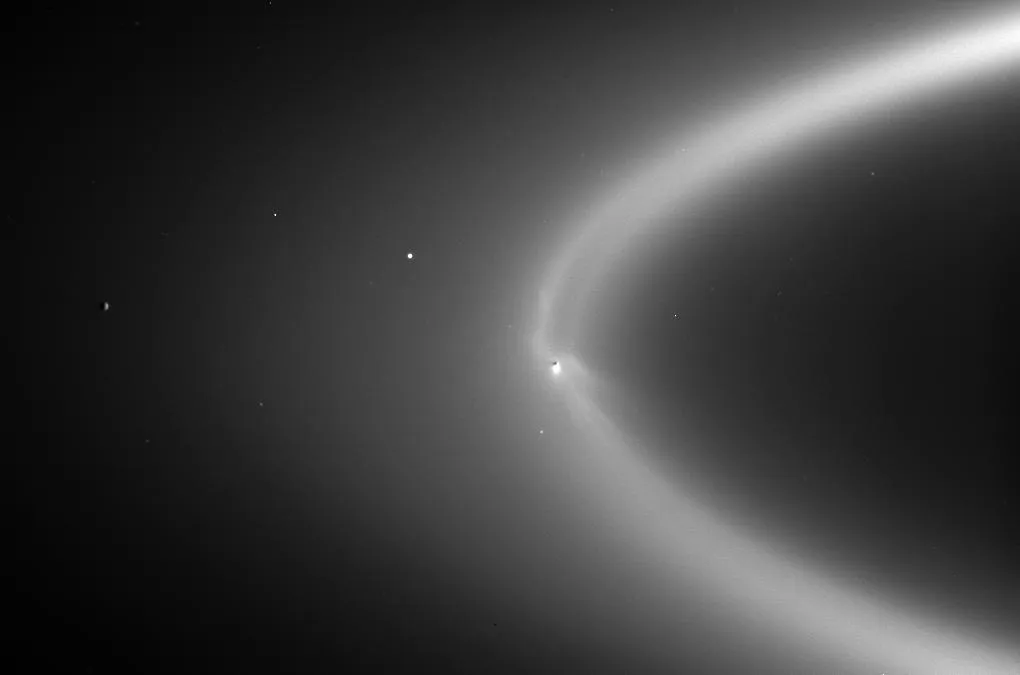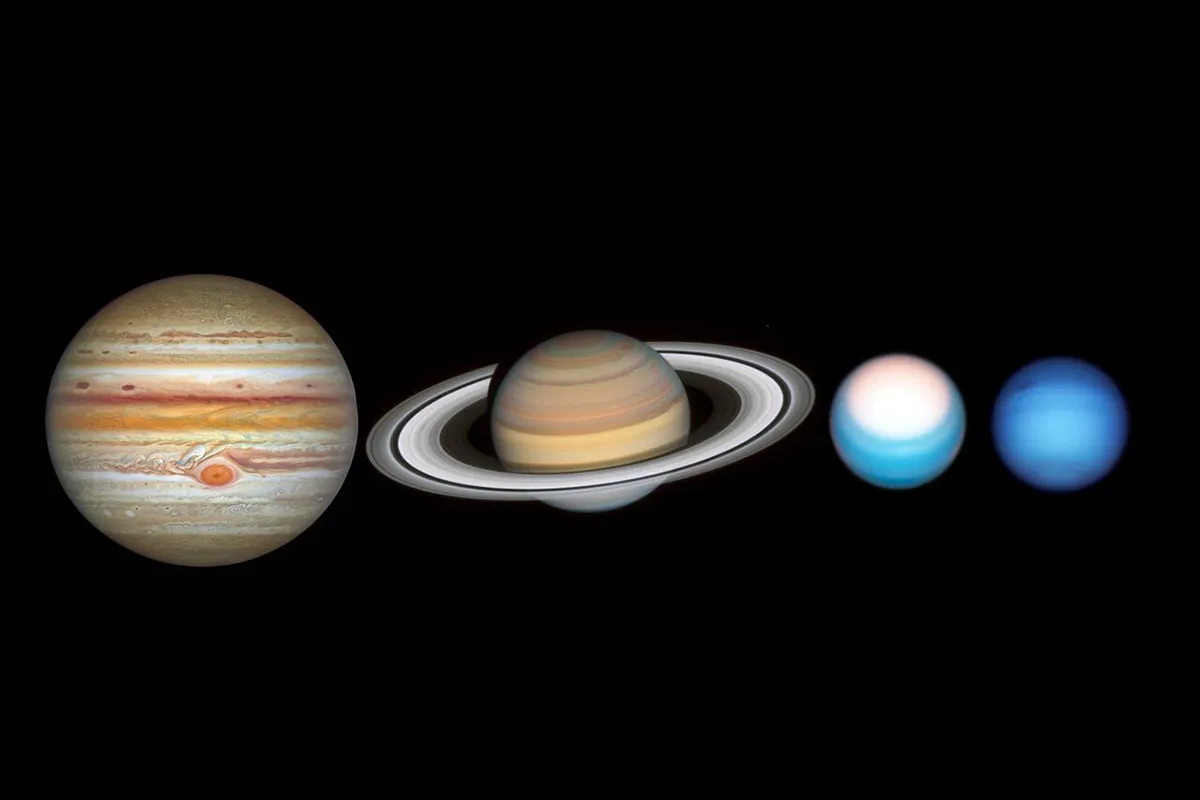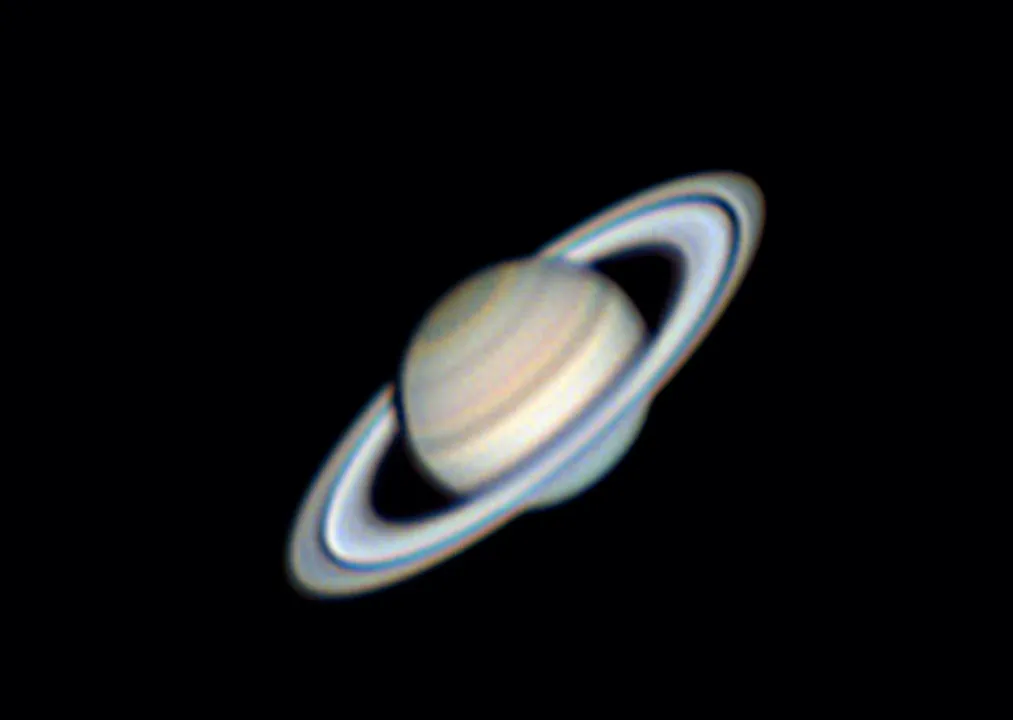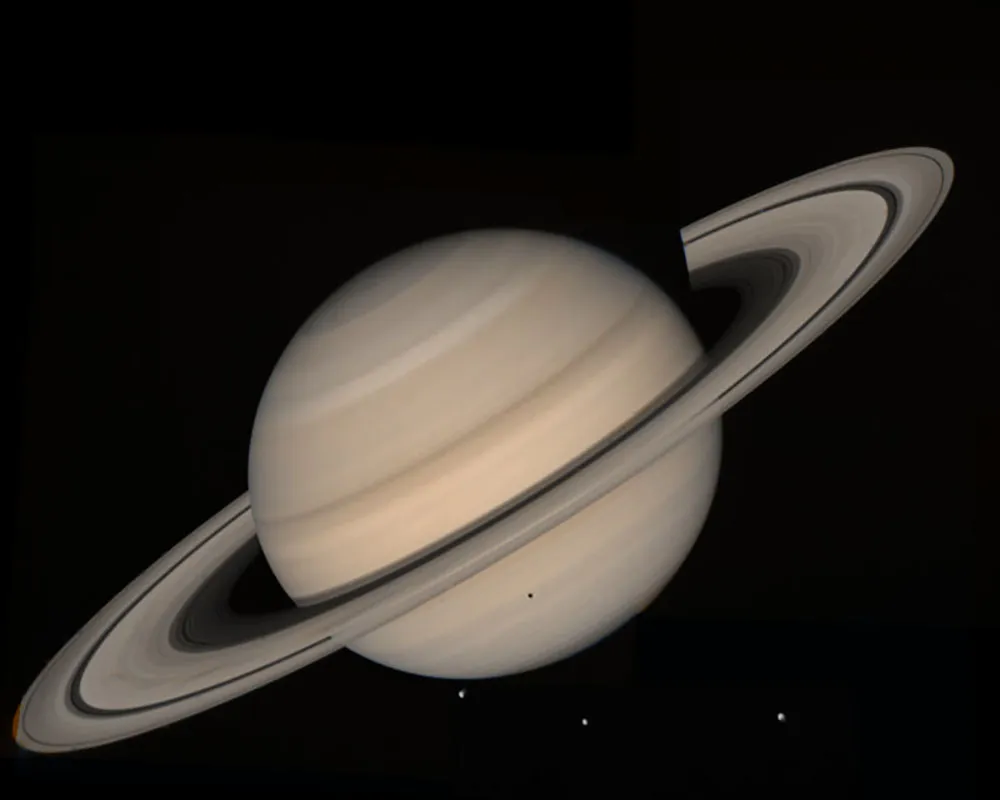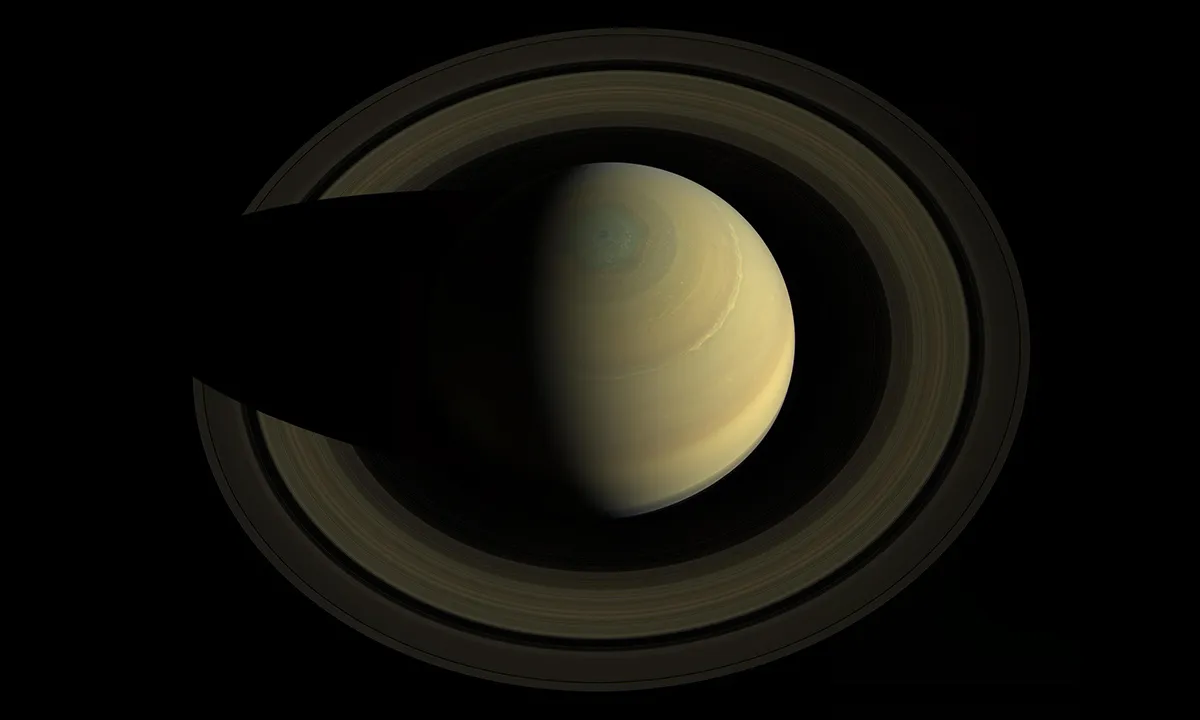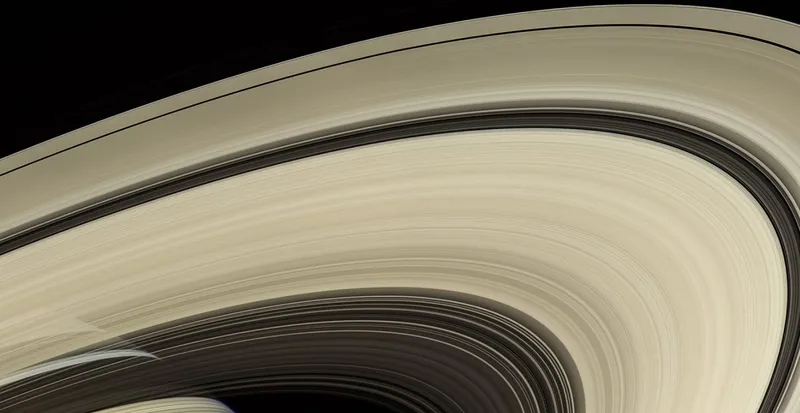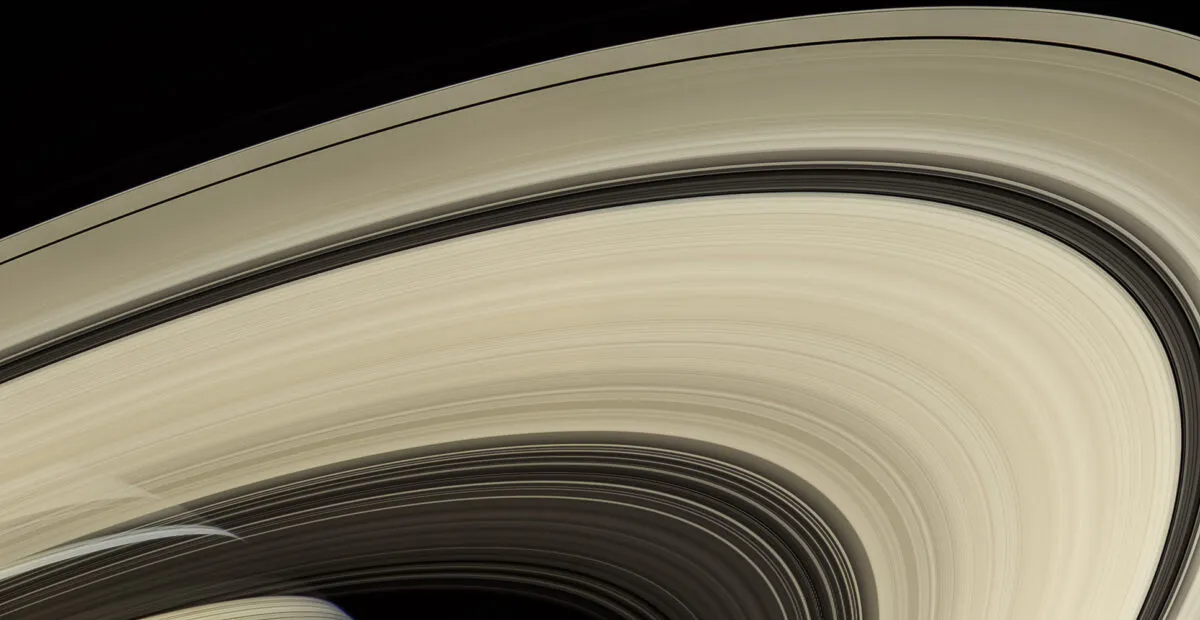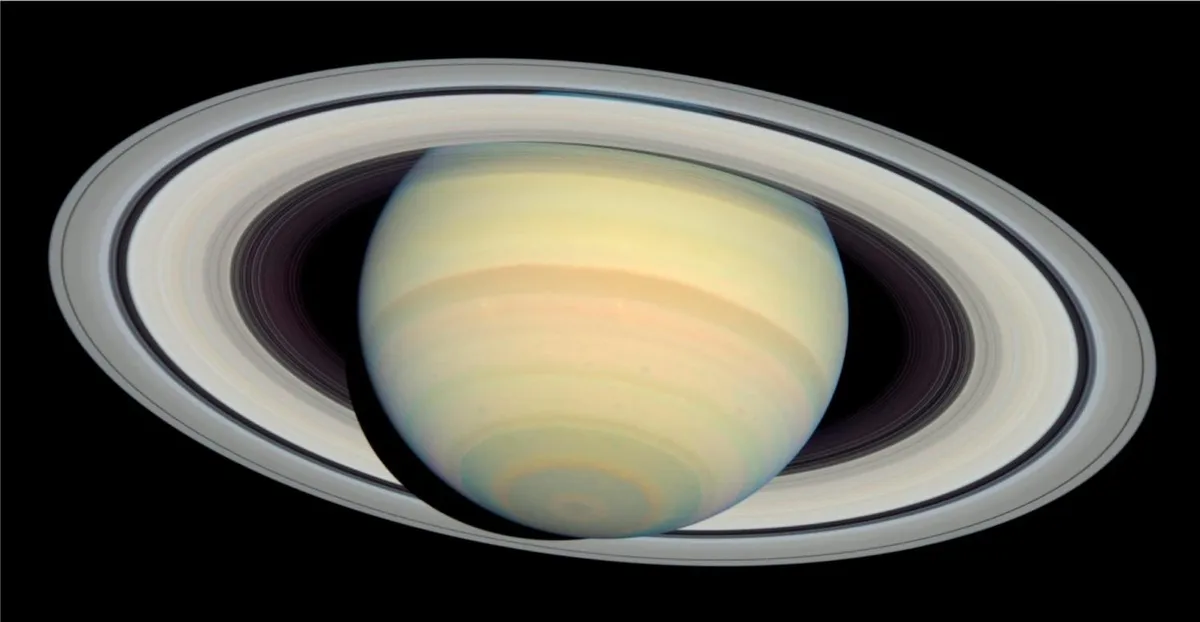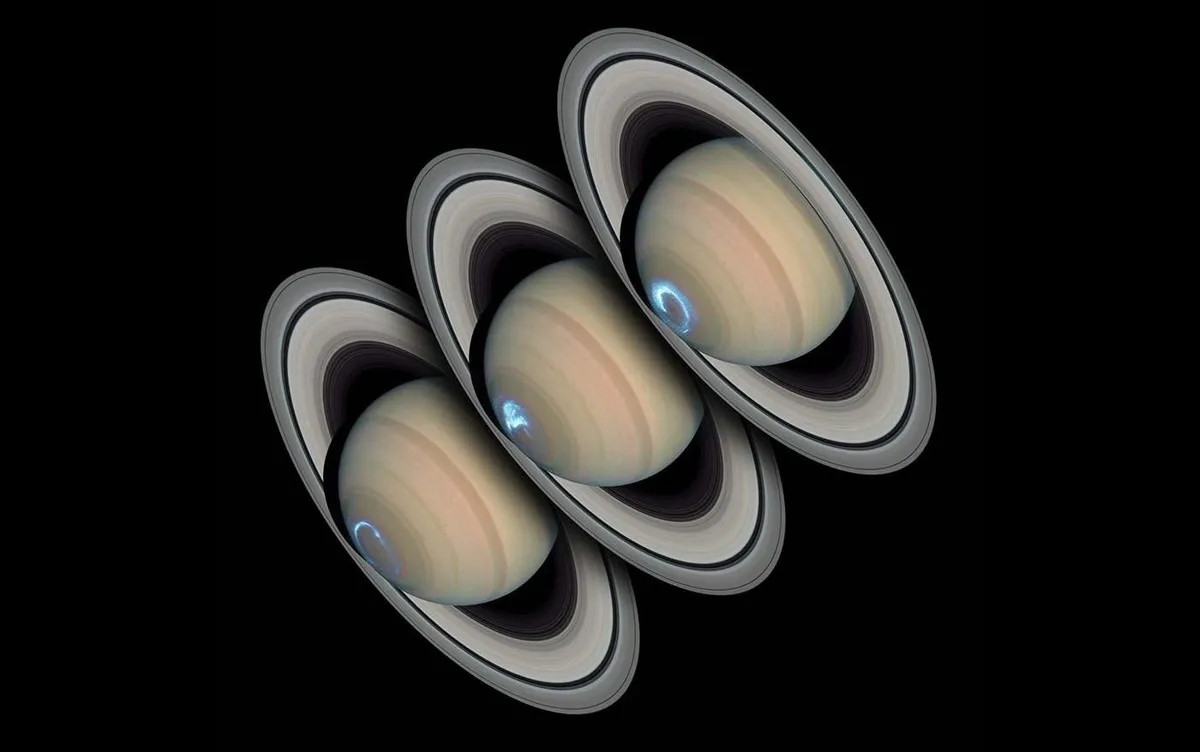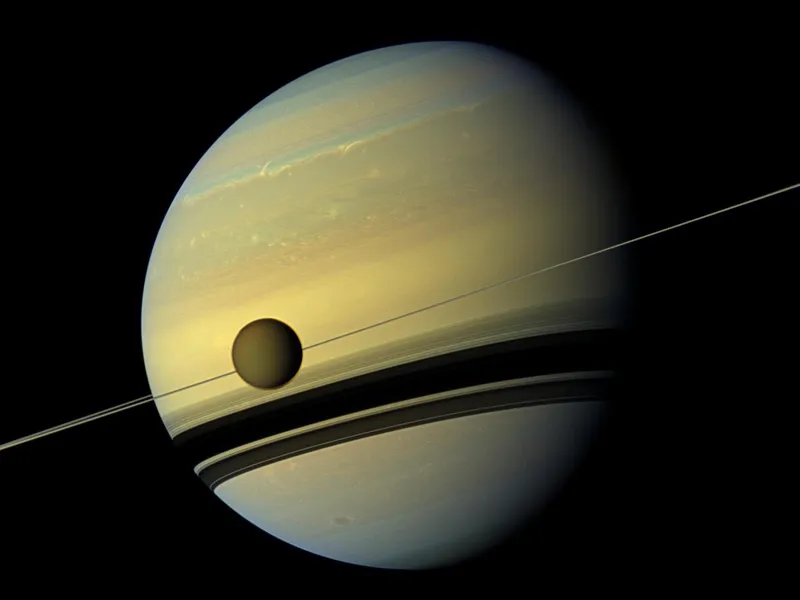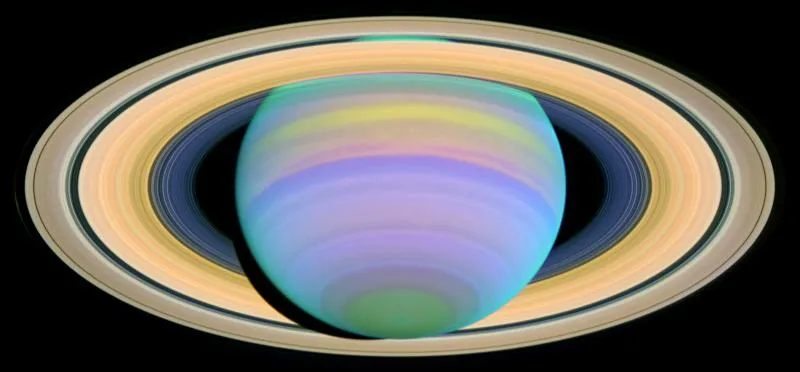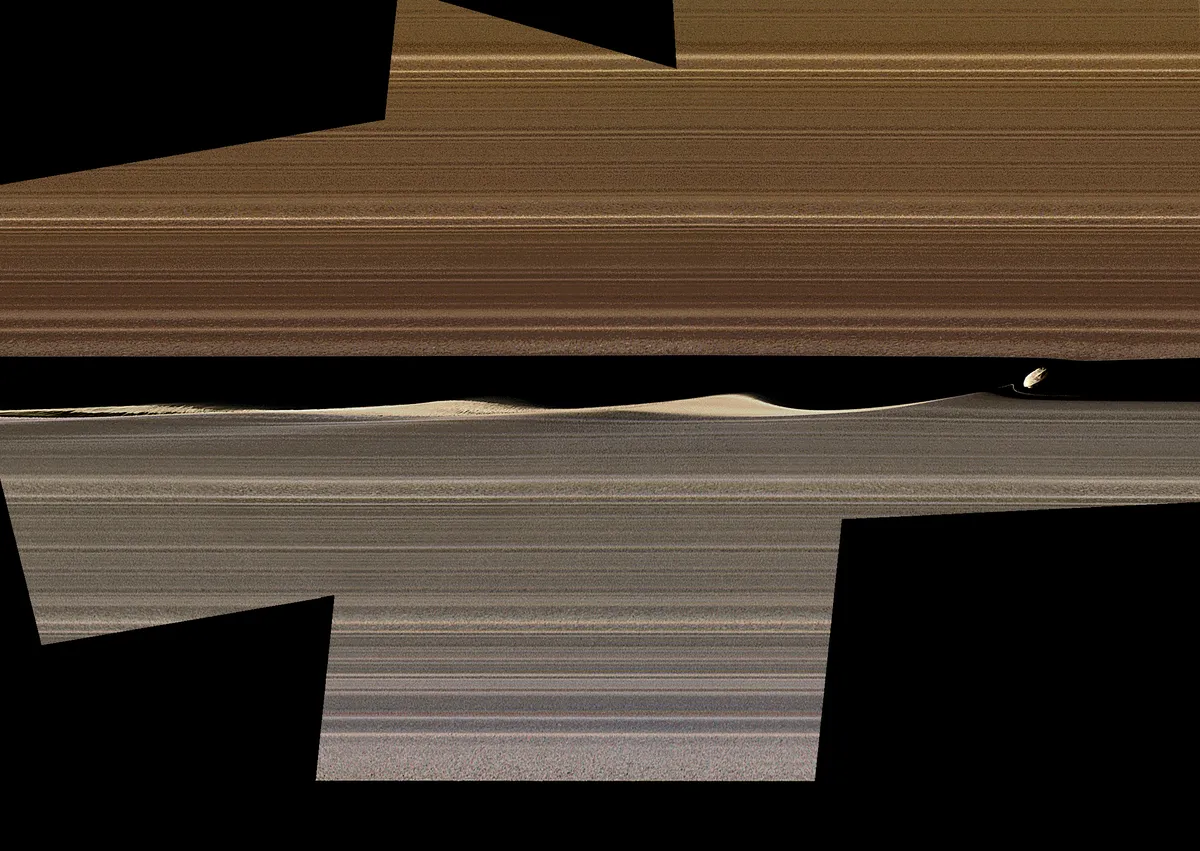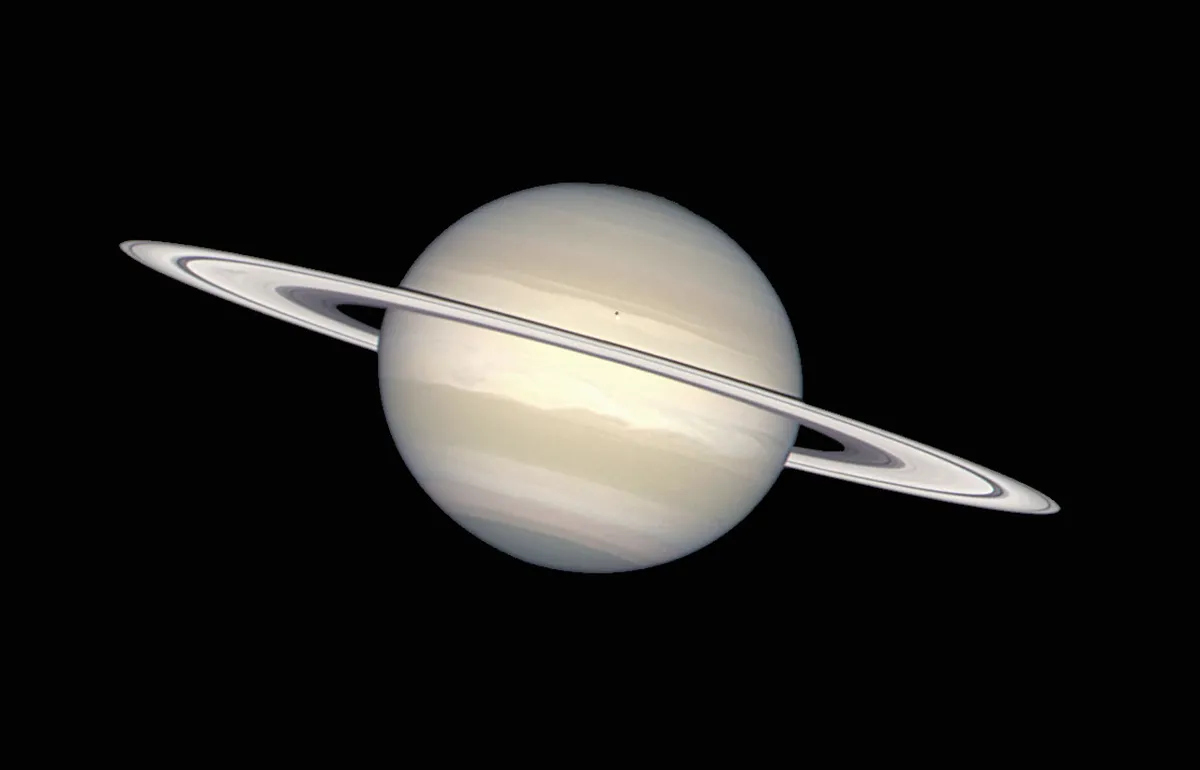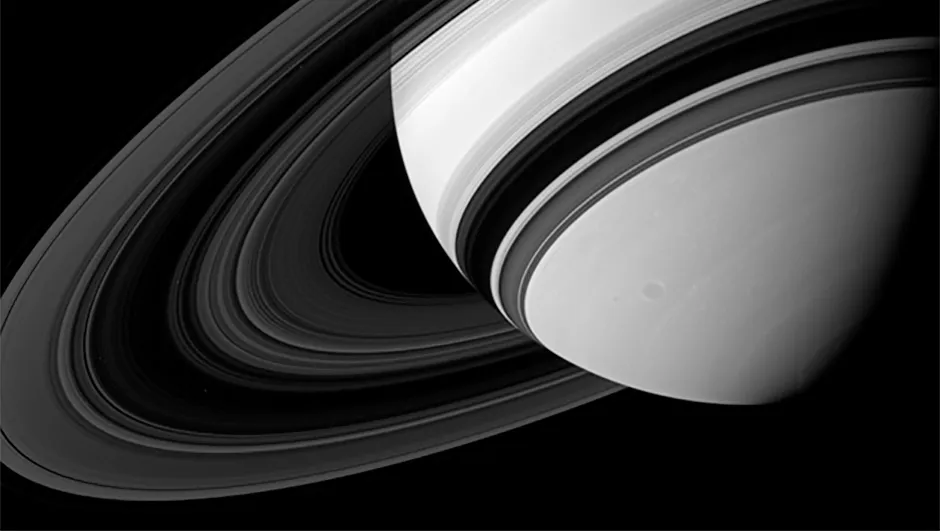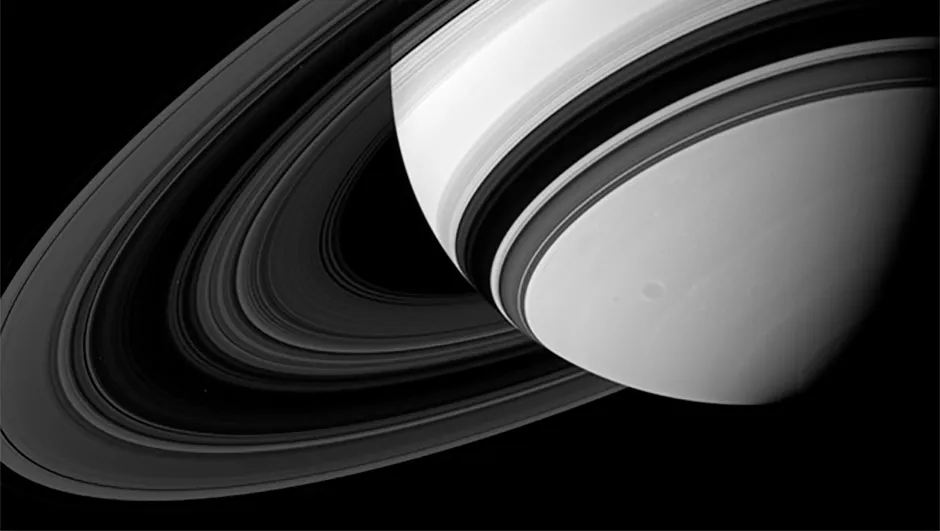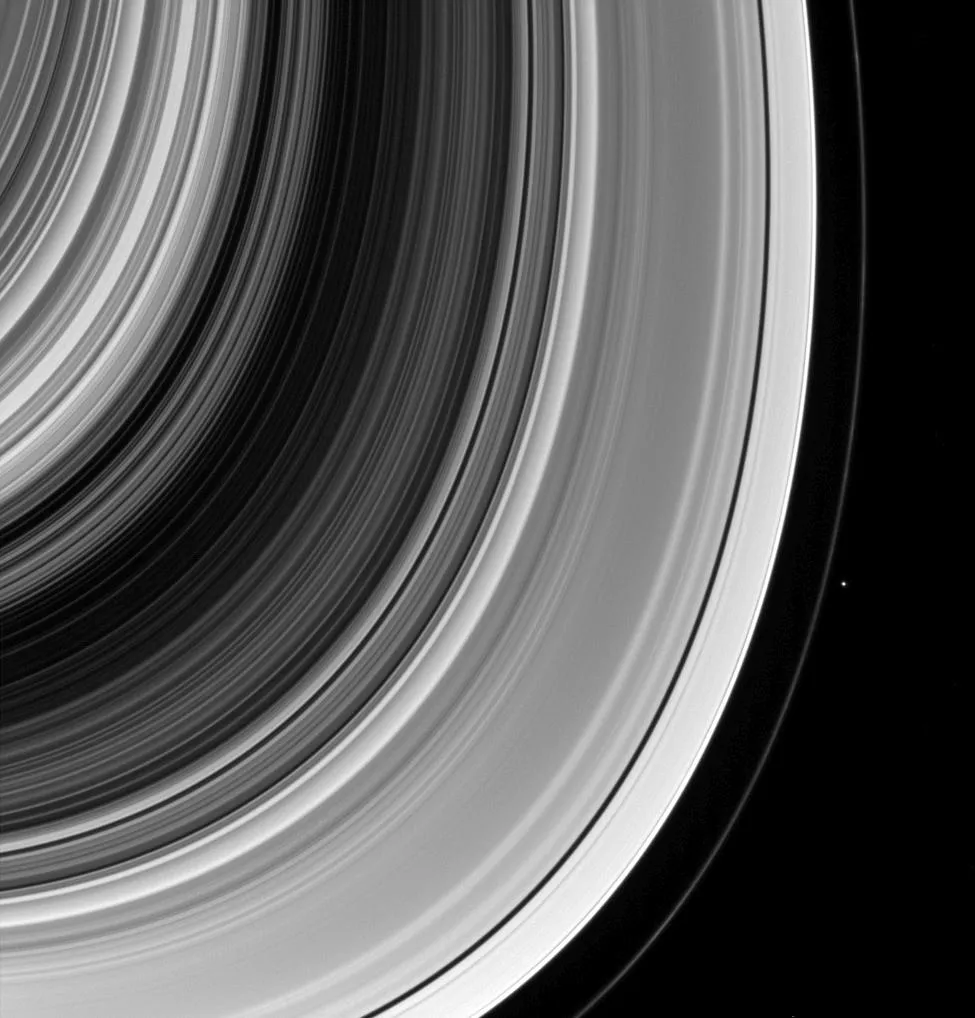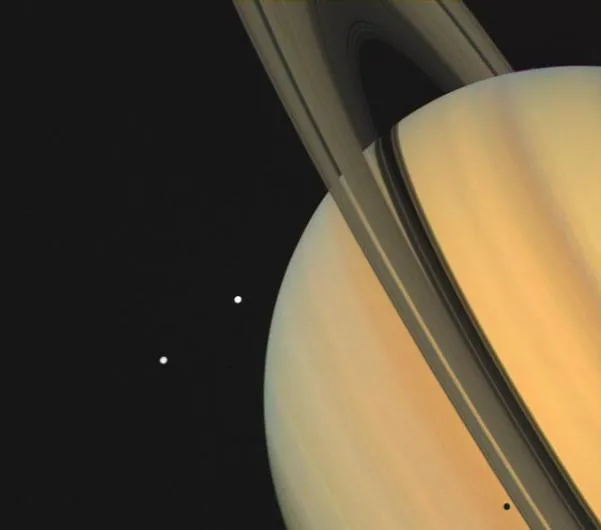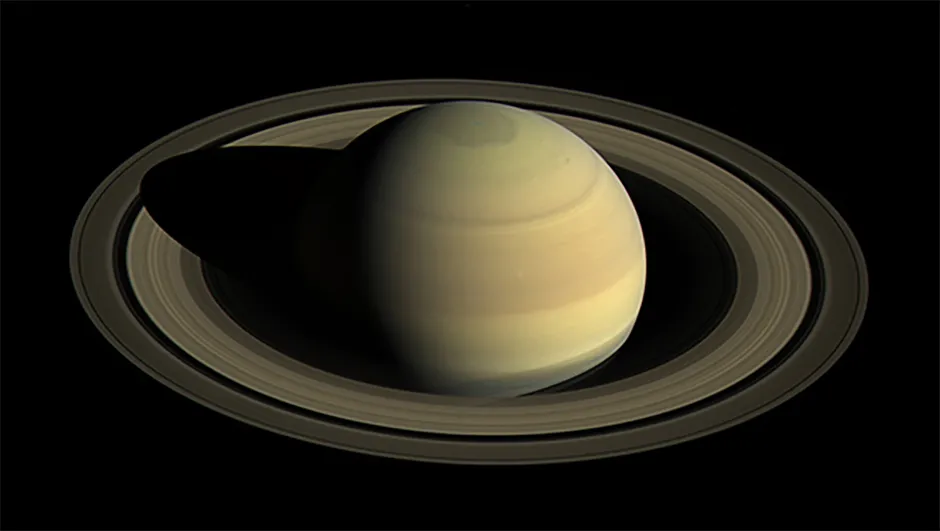The rings of Saturn are possibly the most iconic feature in the Solar System, and over the decades various planetary probes have revealed a lot about these intriguing structures, including clues as to how they formed, what they're made of, and how they have changed over time.
Other planets in the Solar System have rings: Jupiter has rings, for example.
But no Solar System body has rings as spectacular as Saturn’s.
However, go outside our Solar System and Saturn's rings may be seem fairly ordinary, such as those around exoplanet J1407b.
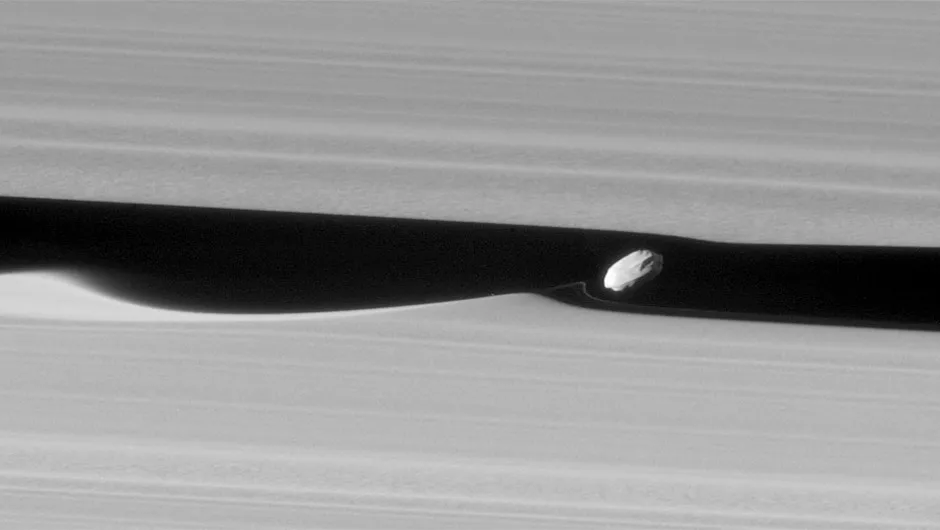
Discovery
Galileo was first to observe the rings around Saturn in 1610, but he was unsure if he was seeing two moons or whether Saturn had handles or ‘ears’.
And why did they seem to come and go every year or so?
In 1656 Christiaan Huygens was first to suggest that Saturn had a ring that was not attached to the planet, and in 1675 Giovanni Domenico Cassini identified the formation as being composed of a series of rings and gaps, identifying the A and B rings and the largest gap, which was named the Cassini Division after him.
It was thought the rings were solid or liquid, but in 1859 James Clerk Maxwell proved they were made of particles and were orbiting Saturn independently.
The main rings have been named in the order of their discovery; so the C ring was discovered in 1850, the D ring in 1933 and the E ring in 1967.
The diffuse Phoebe ring, discovered in 2009, extends an enormous 6–16.2 million km from Saturn.
How many rings does Saturn have?
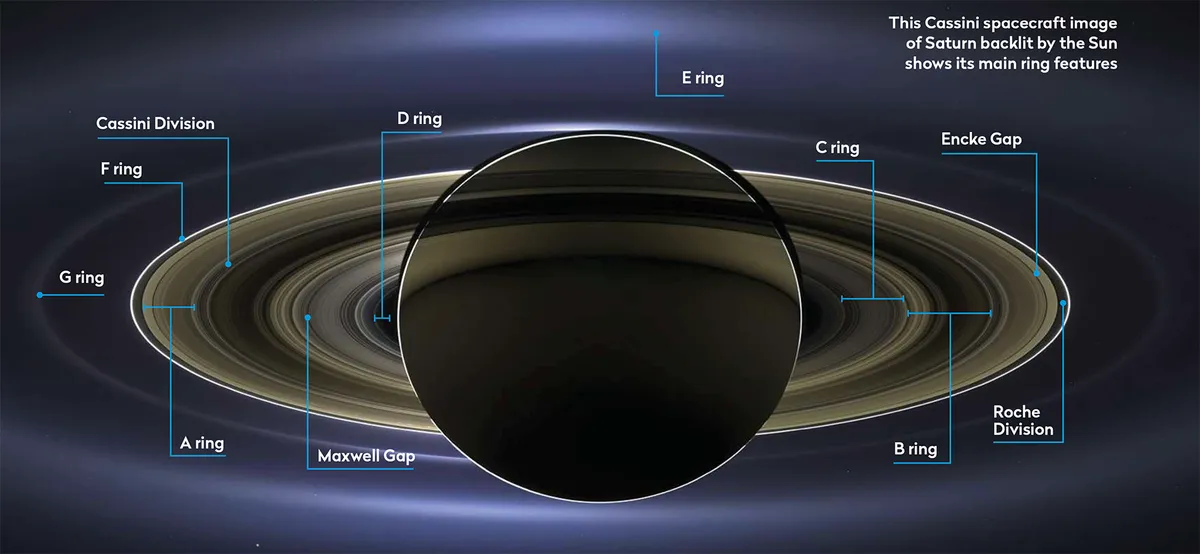
There are 7 main rings around Saturn, labelled A,B,C,D,E,F and G, but many of these have their own subdivisions, gaps, structures and moonlets within.
From inner to outermost, the main structures in Saturn's rings are:
- D, C and B rings
- Cassini Division
- A ring
- Roche Division
- F ring
- Janus/Epimetheus ring
- G ring
- Methone and Anthe ring arcs
- Pallene ring
- E ring
- Phoebe ring
Why Saturn's rings are flat
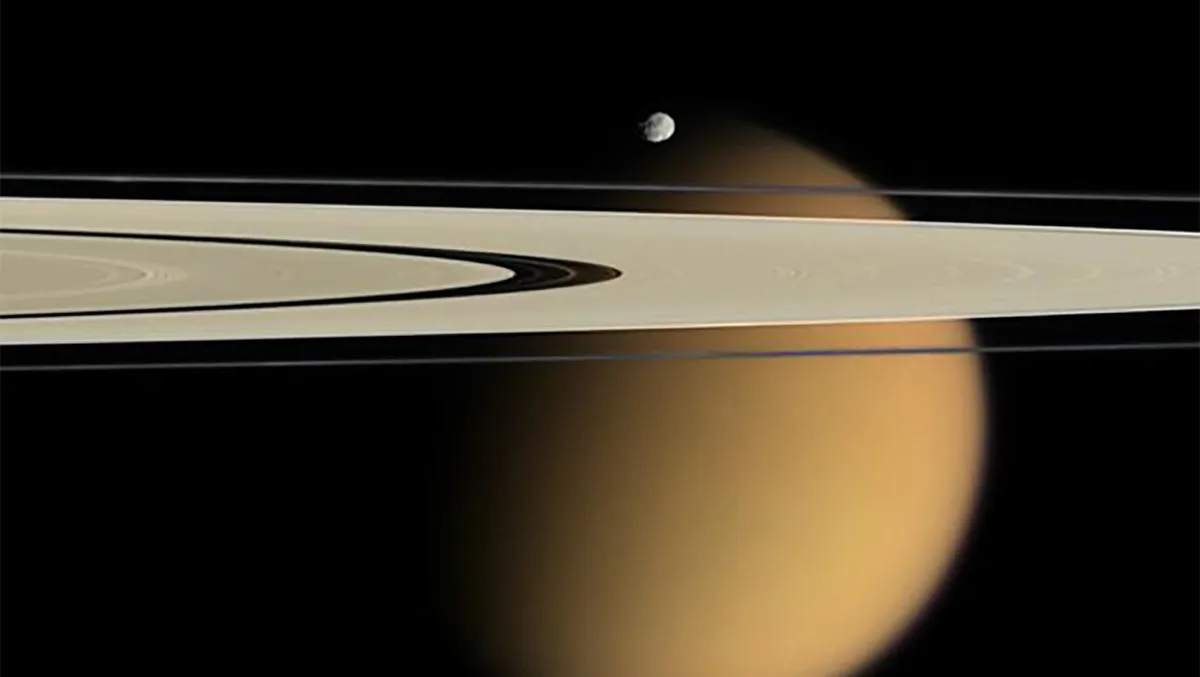
Why are the rings around Saturn so flat, being 250,000km wide and only a few tens of metres thick? The answer lies in how the rings evolve over time.
As each ring particle travels around Saturn there are many collisions between the particles.
Any particles that are in inclined orbits have a higher probability of colliding with other members, and over time they will be eliminated.
Eventually the system settles down into a disc, leaving the flat ring system we see today.
This disc-forming process happens not only in planetary rings but also elsewhere in the Universe, such as in young solar systems and the discs that surround black holes.
As more and more ring particles settle into the disc, collisions increase and the members diminish in size.
We also see smaller and smaller particles as a result of seeing it through higher resolution telescopes.
Saturn space missions?
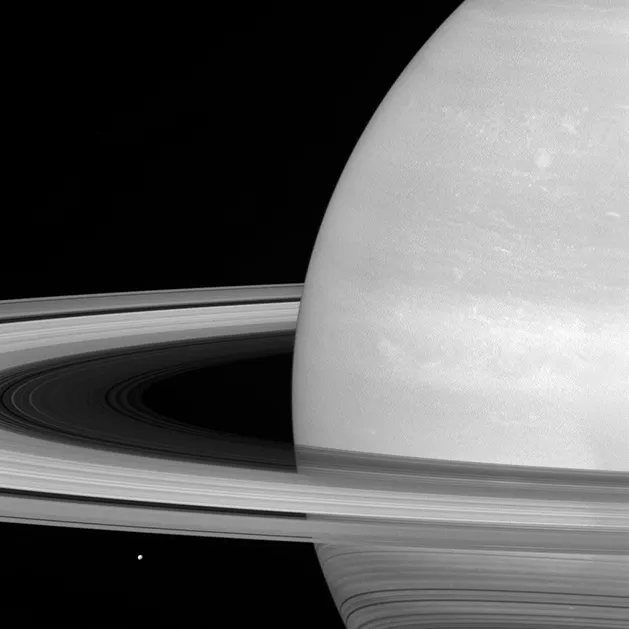
4 missions have had close encounters with Saturn so far. Pioneer 2 was first, passing by in 1979 when it discovered the very narrow F ring.
Normally collisions between particles would spread the ring both inward towards the planet and outward to create a wide, diffuse ring. But the F ring is kept narrowly confined by the influence of two shepherd moons, called Prometheus and Pandora.
In 1980, Voyager 1 identified the G ring, and the following year Voyager 2 discovered several smaller ringlets when it passed by.
In July 2004, the Cassini mission began its 13-year visit to the planet, discovering many new moons and ringlets.
Saturn is now known to be the planet with the most moons in the Solar System.
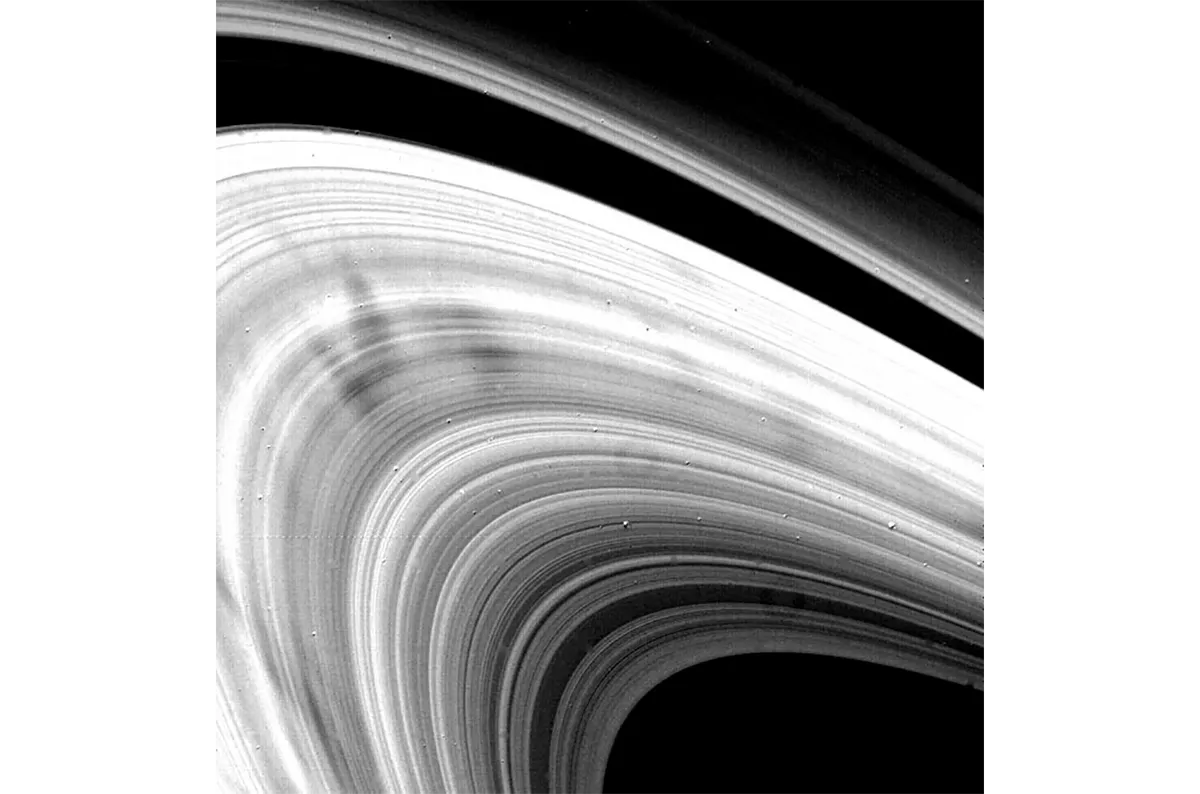
Saturn's rings composition
The particles in Saturn's rings consist of almost pure water ice; this makes them extremely bright.
Saturn’s albedo, the amount of light it reflects, varies from –0.5 when the rings are edge-on to +0.9 when they are fully open.
The particles range from the size of a sand grain to 10m or more in diameter. The total mass of the rings is equal to that of Saturn’s moon Mimas.
The gaps are not well-defined empty spaces, but are areas where particle density drops. The largest of these, the Cassini Division, is 4,700km wide.
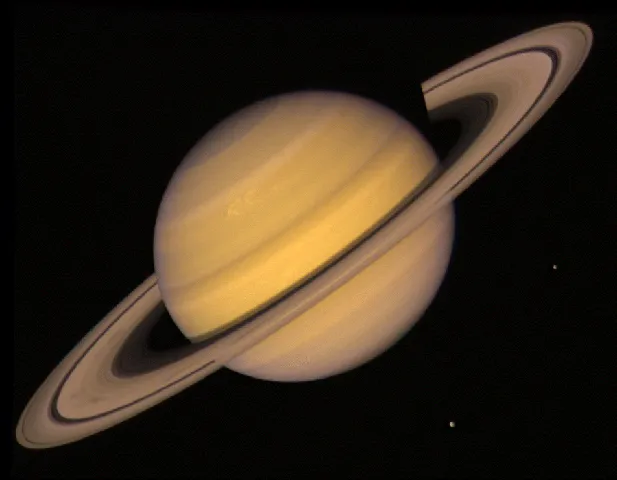
The rings orbit in the same direction as Saturn but at different rates, the inner rings faster than the outer ones in accordance with Kepler’s third law.
The main rings extend from 7,000km to 80,000km from the planet’s equator, yet they are only an average of 10m thick.
The disappearance of the rings that so perplexed Galileo is due to the 27° tilt of Saturn’s axis to the ecliptic.
From Earth we see Saturn's rings from different angles as both planets orbit: first from below, then they almost disappear as we see them edge-on, then they widen again as we see them from above and then they appear edge on again, so the rings seem to vanish roughly every 15 years.
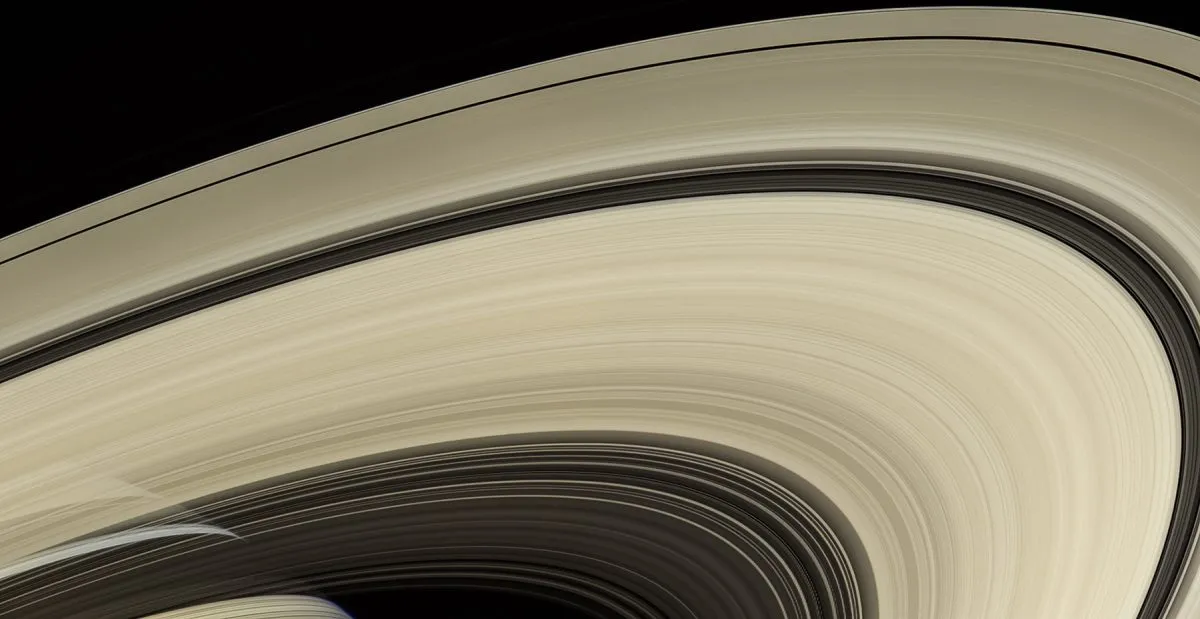
How did Saturn's rings form?
The origin of Saturn’s rings has been hotly debated.
One theory is that they are all that remains of one of Saturn’s moons that was ripped apart by gravitational forces when its orbit decayed, bringing it too close to its parent planet. That would mean the rings are younger than the planet.
Another theory is that the rings are the same age as the planet, being remnants of the nebula from which Saturn formed.
In April 2017 at the end of Cassini’s tour of the Saturn system, the spacecraft performed the Grand Finale phase of its mission, passing between Saturn and its rings 22 times before diving into and burning up in the planet’s atmosphere.
Data from these acrobatics on the rings’ brightness and purity revealed they may have formed just 100 million years ago, when dinosaurs still ruled the Earth.
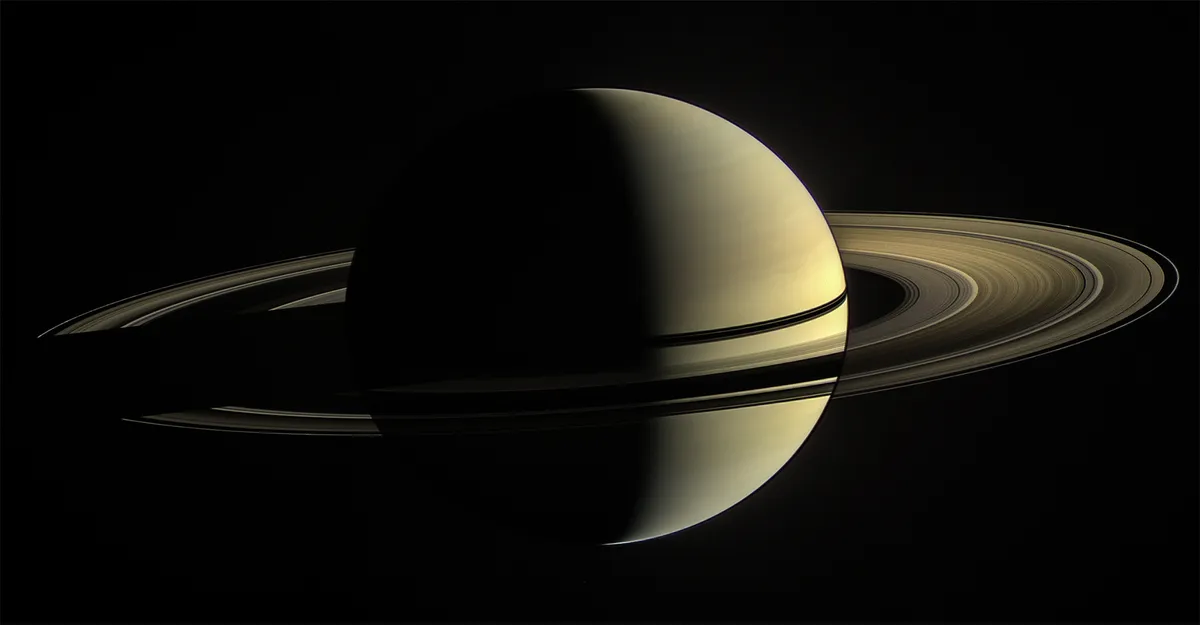
If they were older, the theory goes, they would have been darkened over time by cosmic dust, although other scientists suggest that recycling of material within the rings, as particles collide, break apart and reform, could dilute any pollutants.
However they were formed, the rings are continually losing material in the form of an icy rain falling onto Saturn, at a rate of a swimming pool full of material every half hour.
There’s still plenty of time to view them: it’s estimated they won’t be gone for good for 100 million years.
Planets' rings and the Roche Limit
There are rings across the Solar System, and we know that a few of its planets have rings.
The reason for rings around planets is gravity. Gravity and other competing forces formed our Sun and the protoplanetary disc out of which its orbiting planets formed.
Objects orbiting within a large body's gravitational threshold – known as the Roche Limit – endure tidal forces overwhelming their own gravity, which prevents their coalescence into solid object like a moon.
